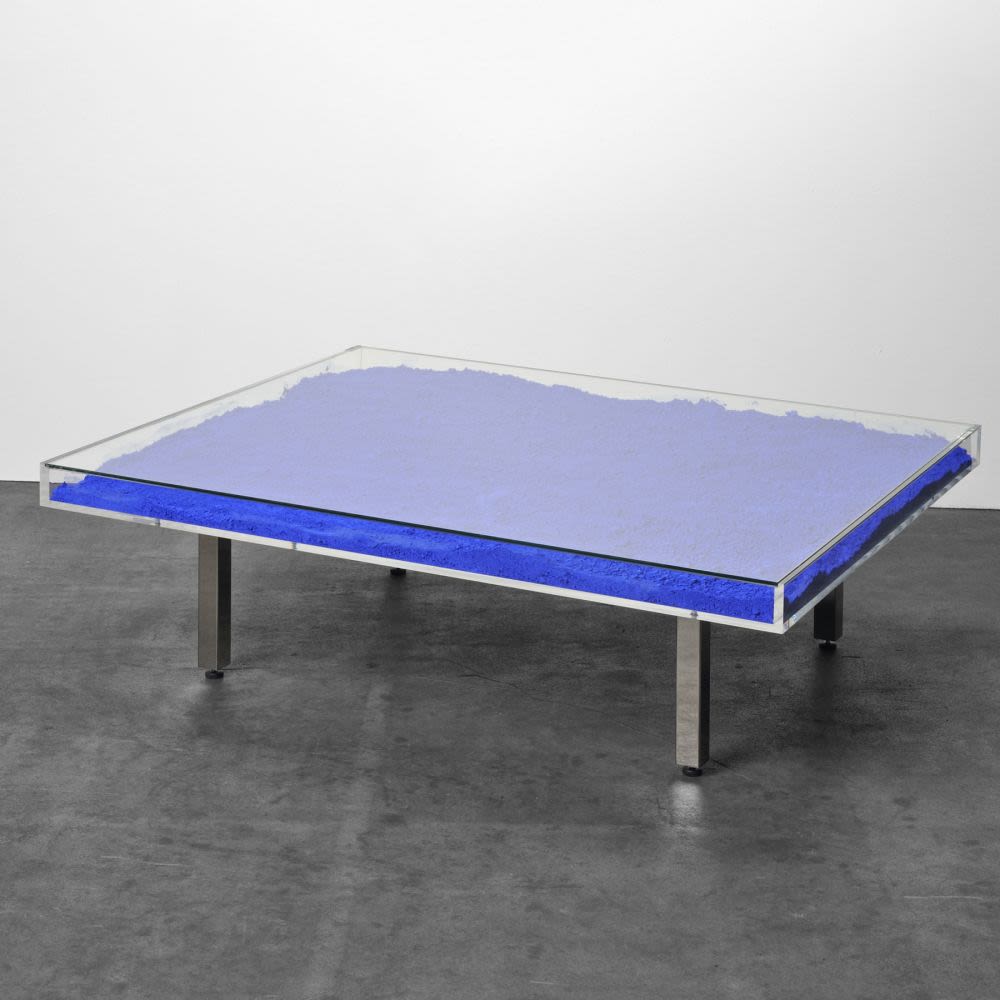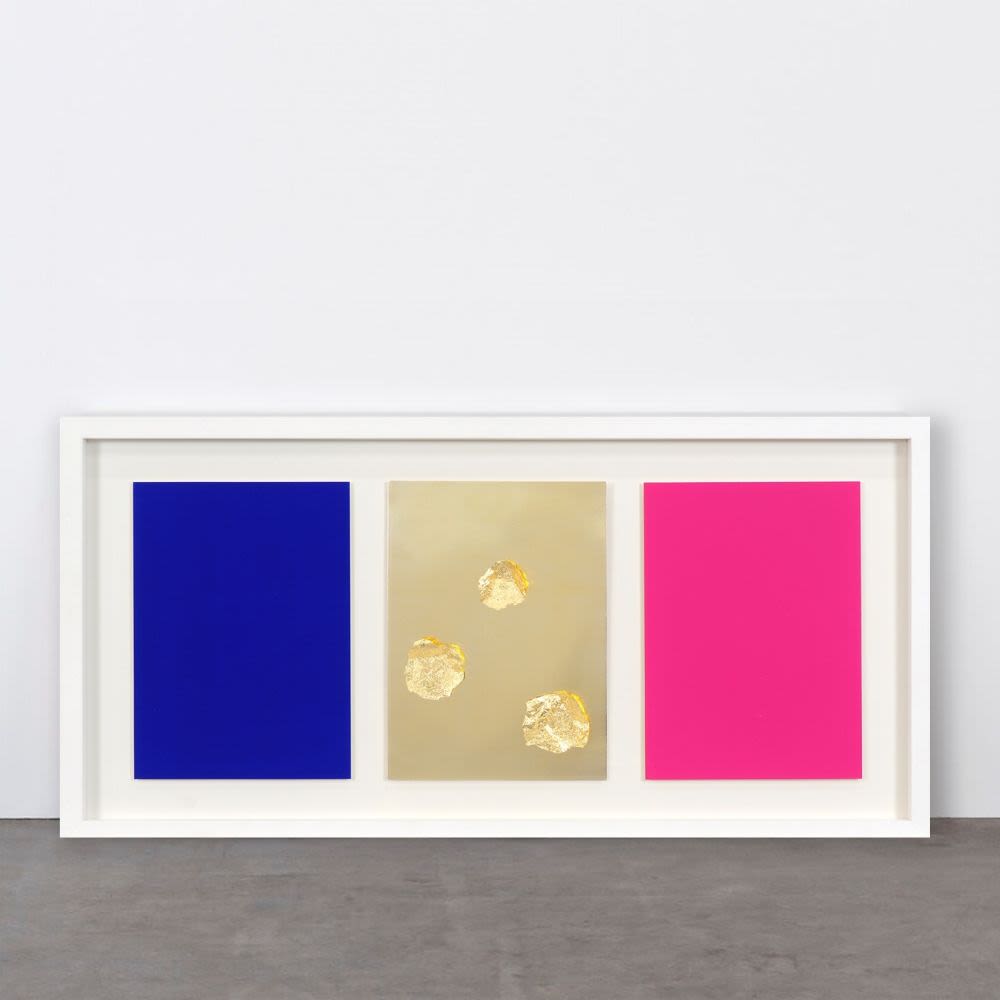Yves Klein
Yves Klein (1928–1962) was a visionary French artist whose radical practice redefined the possibilities of painting, performance, and conceptual art in the postwar era. Born in Nice to a family of painters, Klein initially pursued a career as a judoka, living in Japan before fully committing to art in 1954 upon his return to Paris.
Klein is best known for his luminous monochromes, especially his signature hue, International Klein Blue (IKB)—a vivid ultramarine developed to embody the immaterial and infinite. For Klein, color was a vehicle of spiritual experience. He sought to “liberate color from the prison that is the line,” and considered monochrome painting as a means of making the invisible visible.
His work went far beyond the canvas. In 1958, he famously exhibited The Void, presenting an empty white gallery space as a meditation on presence and absence. In his Anthropometries (from 1960), Klein directed nude models to apply IKB paint to their bodies and imprint themselves on paper, transforming human presence into living brushes. He also worked with fire, gold leaf, water, and natural elements, channeling what he called “the vital force of nature.”
Klein viewed the artist not simply as a maker of objects, but as a conduit of energy and sensibility. He saw beauty as omnipresent yet invisible—something to be revealed rather than created. His brief but blazing career culminated in monumental works like the Gelsenkirchen Opera House murals and his explorations of "immaterial zones of sensibility," which questioned the nature of ownership, value, and art itself.
A founding member of the Nouveaux Réalistes, Klein died of a heart attack in 1962, at the age of 34. Yet his influence endures—his work continues to resonate as a daring fusion of body, spirit, and idea.
“ At first there is nothing, then there is a profound nothingness, after that a blue profundity. „





